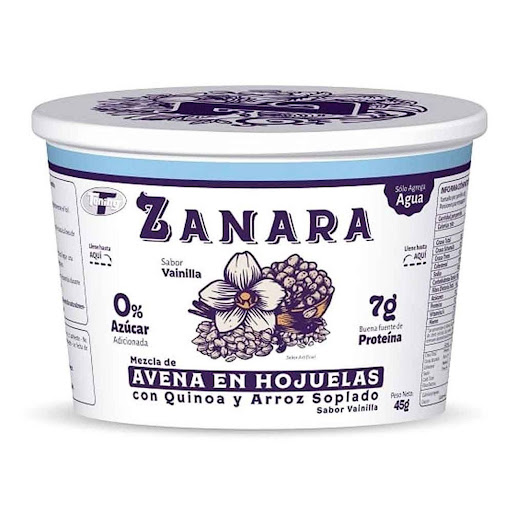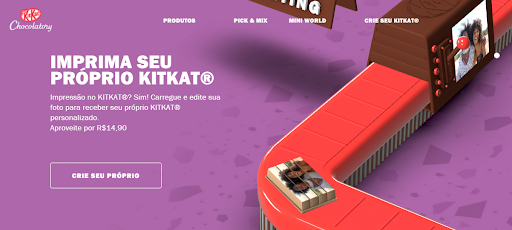Consumer behavior calls for a balance between healthy and indulgent foods, in addition to accounting for the time it takes to prepare meals, looking for unique experiences, interacting over social networks and having the economic scenario influence over the choice of what goes on the plate.
Eating routines have changed significantly since the onset of the pandemic. Now, in the aftermath of the world-shaking phenomenon, its effects can still be felt in the daily habits of consumers who are moving out of confinement into greater flexibility.
As such, when analyzing the behavior of groups from different countries, not only can new habits and consumption scenarios be seen, but they have also become more complex.
On these occasions, inside and outside the home, there is a demand for foods that are healthy and tasty, in addition to accounting for the time it takes to prepare meals, looking for unique experiences, interacting over social networks and having the economic climate influence over the choice of what goes on the plate.
Breakfast: the current favorite meal
Before the pandemic, breakfast was a rushed meal eaten on the way to work or school. With families congregated indoors during the pandemic, breakfast became an even more important meal in households. And, even with people returning to in-person work, research has pointed out that this meal has remained significant.
One example comes from the UK, where the brand Pret a Manger introduced its first “assortment supermarket” (convenience store) in early 2021, with products including frozen ready-to-bake croissants and granola. All featuring the slogan “Bringing joy into your home”. According to Mintel, a global market researcher, the key drivers powering the breakfast choice in markets such as Europe and the UK are:
- Convenience;
- Satiety;
- Health.
In some Latin American countries, hot cereals are traditionally known as breakfast foods.
Focused on easy preparation, the Zanara product line, from the Colombian company Toning SA, followed this local tradition and developed a product that only requires the addition of hot water to the packaging already containing cereals, milk and other natural ingredients, including rice and quinoa. The product creates a new market, as instant hot cereals had not traditionally been available in the country, and they are also an alternative to cereal bars.

The consumer has moved into the kitchen but demands convenience
When it comes to the major meals of the day, like lunch and dinner, the greatest change during this period came from the preparation of these meals at home. During isolation, consumers headed into the kitchen and got straight to work. But with daily demands and work invading homes, there came a search for convenience. And, even with the world beginning to open again, this type of behavior should continue, either because the new habit is incorporated into the routine, a rekindled pleasure in cooking or the cost savings.
A Euromonitor study shows that 23% of interviewed companies think spending more time at home as a result of the pandemic is a permanent change.
This is why special aspects such as “ready to heat” or “ready to cook” make life easier for these consumers. According to the report, mixes used to prepare dinner posted the highest growth in retail value in 2020, settling at 21%. This number refers precisely to the increased demand for meal kits.
Another solution involves offering products for preparing snacks at home that provide some type of ritual, thereby bringing about a feeling of satisfaction and relaxation.
Holistix, a brand focused on natural and Ayurvedic products, took a shot at this strategy.
One of them is the Ritual da Manhã (Morning Ritual), which comes with a copper tongue scraper to aid in oral hygiene and health, a journal to stimulate the custom of writing and the Golden Mix, a powder for preparing hot or cold drinks with anti-inflammatory and antioxidant properties.
Besides, the Euromonitor research points out that the food industry also needs to consider compatibility with household utensils when developing new products, paying attention to convenience and shorter preparation steps.
Resurgence of “on-the-go” consumption
The pandemic has generated many challenges for the on-the-go consumption sector. But, as people become more flexible and return to in-person work, or even at leisure times away from home, this demand will grow again soon.
A study by Mintel suggests that, in addition to the convenience of portability, these foods should have characteristics like calorie control and individual portions, including a focus on hygiene. For example, according to the same survey by Mintel, 50% of juice drink consumers in the UK would be interested in smoothies sold in single-serve 150 ml packages.
The Euromonitor report also points to more opportunities to leverage the consumption of “on-the-go” items at other occasions, by providing food solutions that are compatible with the domestic lifestyle, including when someone is watching television, playing video games, or even during breaks at the remote work for a snack.
New sensory experiences
Food companies have made innovations in texture in order to get their products positioned, particularly in items like snacks and sweets, providing new sensory experiences that allude to being indulgent.
And in this game of tempting food, appearance has become increasingly more important, compensating for the loss of visuals at the point of sale. Along these lines, digital media platforms such as Instagram and TikTok help to sell food using eye-catching colors and shapes and taking the place of physical stores. The concept of “camera-ready” food is used to attract the attention of consumers.
According to Mintel’s report Confeitaria de Chocolate – Brasil (Chocolate Confectionery – Brazil), of August 2020, 34% of consumers mentioned that, during social isolation, experiences such as food customization can be even more appealing because they ensure entertaining moments.

With this in mind, Nestlé’s KitKat brand introduced its KitKat Chocolatory online store in February 2021. Besides featuring all the brand’s products on the website, the store offers a unique experience: consumers can customize their order with packaging of various models and sizes. Consumers can also choose the flavors they want placed in the package and even upload a photo to be printed on the chocolate.
For moments of permissible indulgence
As a type of psychological self-reward for the pandemic’s effects, the demand for indulgent foods has grown. Opportunities have emerged to promote indulgence through products and events.
At the same time, consumers are increasingly aware of the health benefits that food can provide. As such, there is a need to find ways to balance these aspects. Especially because the effects of the pandemic also weighed in the balance. A survey conducted by the Ministry of Health at the end of 2020 showed that almost half of the Brazilian population, for example, changed their eating habits during confinement. At the same time, an Ipsos survey on diet and health during the Covid-19 pandemic including 30 different countries found that Brazilians most likely believe to have gained weight during this period. For this group, there is a tendency to seek foods focused on health.
Indulgence can also be linked to the perception of value, justifying a higher value in the case of premium products due to greater pleasure in experiencing a certain food or drink.
Even with a tighter pocketbook due to the economic scenario, consumers are still looking for premium items for occasions that Euromonitor calls a “rare treat”, putting products in the basket that promise novelty and quality.
New products that combine indulgence and healthiness
A strategic imperative for the business is analyzing new consumer demands, accounting for the high speed with which they have been presented. It is important to deeply understand the needs and desires of consumers, their preferences according to eating habits and, from here on, observe how the dynamics of meals inside and outside the home will take place.
There is a need to satisfy the hunger of a consumer who, generally, demands convenient foods that provide more practicality in daily life; experiential, generating likes and sharing; indulgent, as a form of reward for the emotional impacts of the pandemic; and of course, healthy, because concern for health has taken on an even more importance since 2020.